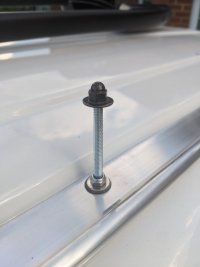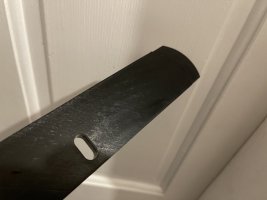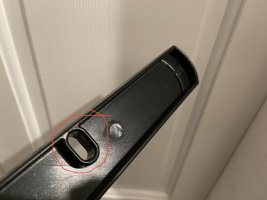Q1) Yes, only tip is on point 5 is put two nuts on the thread this 'locks off' the nuts so that when you tighten the top final nut it doesnt turn the thread through the bottom nut. (speaking from experience!)
Q2) I used a socket set with a extension bit (bacho 1/4")
Q3) Should be fine, I think you are over thinking it, when you have cut it thread tighten the bolt on off to 'clean it up'
Q4) When you try to put on the last bolt (inside the rail) you have to tip up the socket set and lower it in to locate the nut on the thread. You will find that the nut held in the socket set could drop out into the rail and you then cant get it out without removing the whole rail (bit of nightmare). and old trick it so put a small bit of paper into the socket first then push the nut in, the paper 'jams' it in so it doesnt fall out when you turn it upside down.
Hope this Helps
Q2) I used a socket set with a extension bit (bacho 1/4")
Q3) Should be fine, I think you are over thinking it, when you have cut it thread tighten the bolt on off to 'clean it up'
Q4) When you try to put on the last bolt (inside the rail) you have to tip up the socket set and lower it in to locate the nut on the thread. You will find that the nut held in the socket set could drop out into the rail and you then cant get it out without removing the whole rail (bit of nightmare). and old trick it so put a small bit of paper into the socket first then push the nut in, the paper 'jams' it in so it doesnt fall out when you turn it upside down.
Hope this Helps





